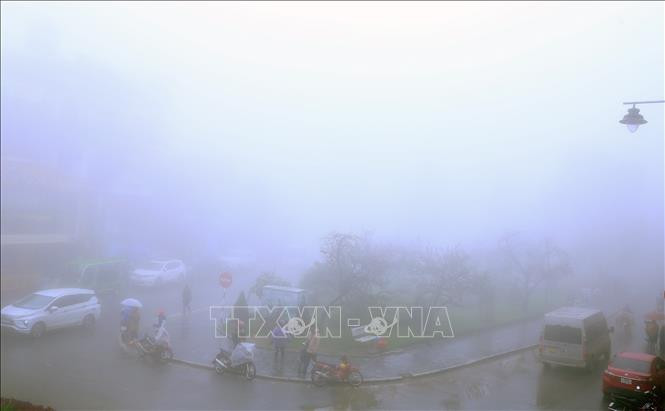Low temperatures caused light frost to appear early on December 7 at Fansipan peak (Sa Pa town, Lao Cai province) - 3,143m above sea level.
This is the fourth frost to appear on Fansipan peak since Lap Dong.

According to the Lao Cai Provincial Hydrometeorological Station, on the night of December 6, the cold air affecting the mountainous areas of Lao Cai was denatured, causing the sky to be less cloudy at night, leading to large ground heat radiation, causing the temperature at the top of Fansipan to drop to negative levels (below 0 degrees Celsius) and frost to form.
Frost began to form around 4-5am on December 7, spreading a thin white layer around Fansipan Mountain, spreading a thin layer on the path, stone steps, wooden floors - where visitors can admire the scenery and cling to tree branches and grass growing close to the ground. When it was light, the frost quickly dissipated. It is forecasted that at night and in the morning of December 8, the temperature on the top of Fansipan would still be low. If the weather is only light wind or calm, frost is likely to continue to occur with greater intensity.
Hoarfrost, also known as frost, is the phenomenon of water vapor freezing into small, white salt-like particles right on the ground, the surface of plants or other objects when the air above is humid and cold. The condition for hoarfrost to form is that the temperature must drop below 0 degrees Celsius. This is an extreme weather phenomenon, greatly affecting the growth of crops, causing heavy damage to producers.
According to Tin Tuc newspaper